The Complete Guide to Emerald Cut Diamonds
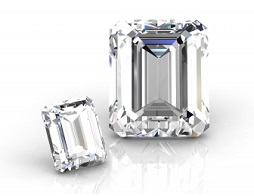
Elegant, classic looking emerald cut diamonds.
Back in the Art Deco period, the emerald cut diamond was a popular choice for engagement rings. The cutting style features stacked terraces and large parallel facets which were adapted from cutting techniques developed for emeralds (green gemstones).
Naturally classy and sophisticated in appearance, the scintillation pattern of an emerald cut diamond differs from those found in brilliant cutting styles like the rounds or ovals.
Instead of having tiny sparkles of light emitting from the facets, an emerald cut diamond flashes “on” and “off” due to the nature of the step cut. Combined with its timeless appearance, the unique sparkle factor of emerald cut diamonds is a compelling reason for women to love them.
In this write up, I’m going to show you how to select a beautiful emerald cut diamond that exhibits dramatic flashes of light and is full of brilliance. You are also going to find out the insider tips and the things to look out for to avoid poorly cut diamonds.
I will also reveal the best color/clarity ratings and the ideal proportions to look out for when picking out a diamond. And if you are looking for ideas for a great looking engagement ring setting, I’ve got you covered as well.
Let’s jump right in!
Here is a list of topics we will be covering:
- What is an Emerald Cut Diamond?
- Ideal Emerald Cut Diamond Proportions
- Examples of Well Cut Emerald Cut Diamonds
- What is the Best Color Grade For Emerald Cut Diamonds?
- What is the Best Clarity For Emerald Cut Diamonds?
- Length to Width Ratios Can Make or Break Appearances
- How Much Does an Emerald Cut Diamond Cost?
- Pavilion Bulge Can Ruin an Otherwise Attractive Looking Diamond
- Don’t “Cut” Corners (Pun Intended), They Do Matter For Shape Appeal!
- Best Emerald Cut Engagement Ring Settings And Designs
- Summary And Recap: Where to Buy Emerald Shape Diamonds
What is an Emerald Cut Diamond?
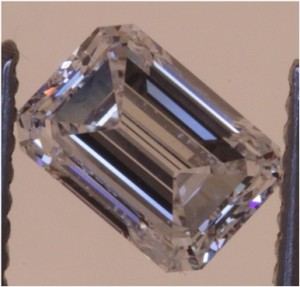
What really makes an emerald cut nice?
Emerald cut diamonds usually take on a rectangular outline and chiseled step cuts with straight linear facets. They also have “blocked corners” to give the outline a distinct classic appearance.
As a result of its step cut and parallel faceting structure, emerald cuts don’t bend or reflect light as much as the round diamonds. Consequently, this leads to a loss in brilliance and scintillation properties which makes the emerald cut very poor at hiding material flaws present in the rough stone.
Also, having a huge table facet is like having a big open window which enables you to peer deep into the diamond’s body. This means that any inclusions, flaws or color nuances are easier to be picked out compared to the round diamonds.
Ideal Emerald Cut Diamond Proportions
Like other fancy shape diamonds, I want to point out that there are no fixed cut parameters or “magical numbers” that is guaranteed to yield a stunning emerald cut diamond.
The table of ideal proportions below is compiled based on my experience with picking great looking emerald cut diamonds with strong light return and luster. It only should serve as a tool to help you weed out poorly cut diamonds.
| Excellent | Very Good | Good | Fair/Poor | |
|---|---|---|---|---|
| Table % | 61% – 68% | 59% – 70% | 58% – 72% | Outside Ranges |
| Depth % | 60% – 65% | 57% – 68% | 56% – 70% | Outside Ranges |
| Polish/Symmetry | Excellent – Very Good | Good | Outside Ranges | |
| Length to Width | 1.30 – 1.50 | 1.20 – 1.60 | 1.10 – 1.70 | Outside Ranges |
| Girdle Thickness | Thin – Slightly Thick | V. Thin – Very Thick | Outside Ranges | |
| Culet Size | None | Very Small | Small | Outside Ranges |
* Note: The recommended emerald cut diamond proportions should be used as a reference only.
To make your final selection, you need to base your decisions on a magnified video in neutral, unbiased lighting. It is important that you never buy a diamond based on a grading report alone as the certificate doesn’t reveal shape appeal or optical performance characteristics of the diamond.
I also strongly encourage you to utilize light performance tools like ASET to help you assess cut quality. Shopping online gives you access to this data and allows you to enjoy risk-free shopping policies. It also enables you to make rational choices away from the pressure selling and hassling in a brick and mortar store.
Examples of Well Cut Emerald Cut Diamonds
Truly well cut emerald cut diamonds are very hard to find and the proportions above are just a guideline to help you get started with. In order to help you get a better idea of how well cut diamonds look like, check out these two diamonds with very strong light performance.
Using the videos, these diamonds were selected for their scintillation patterning and light return. I also look out for the hall of mirrors effect as well as shape appeal to make the selections.
To be clear, I literally had to review more than 500 diamonds just to pick out these four diamonds. And that’s why I stress the importance of diamond videos in neutral, unbiased environments. Also, you have to go online (instead of b&m stores) to get the depth of inventory to cherry pick from.
What is the Best Clarity For Emerald Cut Diamonds?
Emerald-cuts have big stepped surfaces which can expose even the most minor flaws in the diamond’s body. Due to the nature of their step cutting style, they have less brilliance and scintillation and generally require a higher clarity rating to stay eyeclean.
In general, I would recommend VS2 clarity as the “Goldilocks” rating to get an eyeclean diamond without having to pay the premium for higher clarity grades. But do take note that as you go larger in carat size, you would need a higher clarity grade for the diamond to stay eyeclean.
| Carat Size | Recommended Clarity | Most Affordable Clarity |
| 0.5 carat or less | VS2 – FL | SI1 |
| 0.51 ct – 0.99 ct | VS2 – FL | SI1 |
| 1.00 ct – 1.99 ct | VS2 – FL | VS2 |
| 2.00 ct or more | VS1 – FL | VS2 |
For those who want to get better value for money, I recommend vendors that feature an HD video and provide magnified images of the diamond listing. This will help you push the envelope for a lower clarity grade without compromising the diamond’s appearance.
Below, I’ve listed two emerald cuts which are 1 carat in size and have a clarity grade of SI1. As you can see, the type and location of inclusions can seriously affect the appearance of the diamond.
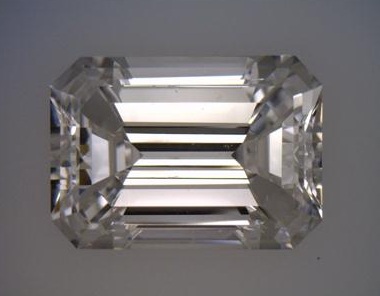
Eye-clean SI1 with scattered inclusions
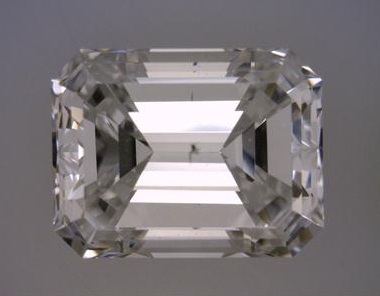
Not eye-clean due to the dark cloud inclusion
Here, I want to highlight that the eyeclean SI1 emerald cut is an outlier because most SI1 diamonds aren’t eyeclean. I was only able to cherry pick this eyeclean SI1 diamond because of the videos and photography listings provided by James Allen.
The bottomline is, you need to exercise caution when you are buying diamonds of a lower clarity grade.
Regardless of where you shop, you need to examine the diamond under magnification in unbiased, neutral lighting. As much as possible, I also recommend inspecting the diamond from as many tilt angles as possible to check it for eyecleanliness.
What is the Best Color Grade For Emerald Cut Diamonds?

With their large, open facets, emerald cut diamonds tend to reveal their color easily. However, you should bear in mind that color evaluation is subjective and your acuity would differ from another person’s.
If you are a color sensitive person, you might need to consider a higher color (D-G) to avoid seeing any tinge of yellow in your diamond.
| Carat Size | Recommended Color | Most Affordable Color |
| 0.5 carat or less | D – G | H – I |
| 0.51 ct – 0.99 ct | D – G | H – I |
| 1.00 ct – 1.99 ct | D – G | H |
| 2.00 ct or more | D – F | G |
There are a number of people who buy emerald cut diamonds for their classic appeal. If you are someone who loves vintage style jewelry, it is perfectly fine for you to go down to J or even K colors where the diamonds show a warm tint.
Length to Width Ratios Can Make or Break Appearances
I personally find the most attractive length to width ratios to be within a range of 1.30-1.50:1.00. Emeralds with these l/w ratios tend to showcase the flavor of emerald shape better.
In general, the more squarish the shape, the more suitable it is for someone with slender and long fingers. Vice versa, the more rectangular the diamond is, the more suitable it is for someone with short and thick fingers.

That said, I need to stress that the preference for a diamond’s outline is entirely up to an individual’s personal choices. Some people might prefer a more squarish look with a L/W ratio in the range of 1.20:1.00 while some others may like their diamonds slightly elongated.
If you aren’t sure what your preferences are, you may want to review a range of emerald cut diamonds to see how they look like before making a decision.
How Much Does an Emerald Cut Diamond Cost?
Compared to round diamonds, the price of emerald cut diamonds are generally 20-30% cheaper and they can give you a bigger bang for your buck. Depending on the qualities of the diamond, the prices can vary according to the 4Cs (carat, cut, color and clarity).
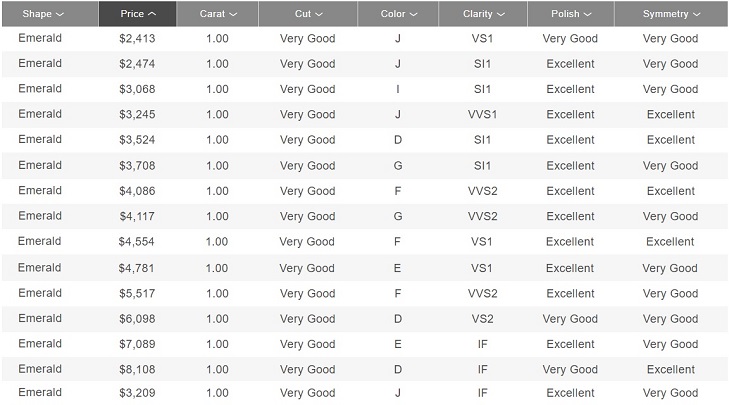
Price chart comparison of GIA certified 1ct emerald diamonds.
Obviously, a diamond with better material quality and specifications will cost more. As you can see from the price chart above, the differences between the higher tier and lower tier grades can be significant!
When buying an engagement ring, most people have a limited amount of budget to work with. One mistake that most beginners make is to assume that a D/IF diamond is going to look better than an eyeclean G/VS2 diamond.
The truth is that differences in color and clarity gradings are subtle and largely technical. Visually, a G/VS2 diamond would look similar to a D/IF in the face up view. This means that if you don’t need a symbolic D/IF clarity, you can save alot of money simply by being practical and buying a diamond with lower color and clarity ratings.
Pavilion Bulge Can Ruin an Otherwise Attractive Looking Diamond
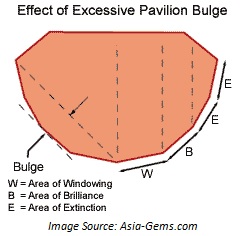
Besides retaining dead weight which makes the diamond look small for its carat weight, an excessive pavilion bulge can also cause problems during the setting process.
Unfortunately, grading reports do not contain any information or details on the presence or degree of pavilion bulging. You need to eyeball the diamond in order to determine that!
However, there are some tell-tale signs you can observe and beware of. An excessive bulge on the pavilion tends to cause windowing and extinction in the diamond’s optical characteristics.
Windowing is usually found in diamonds that are cut too shallow and also manifest when the proportions are all wrong. If you can see through the diamond easily, there is significant windowing and here’s a quick test you can do.
Hold up the loose diamond with a tweezer. With the other hand, run your finger underneath the diamond and look through it. If you can easily make out the fleshy colors of your finger, this means there is a huge amount of light leakage through the diamond.
Extinction, on the other hand, refers to the presence of dark areas within the diamond. They are typically found in stones that are cut to high depth percentages and can also occur due to the rounding of the pavilion facets caused by the excessive bulge.
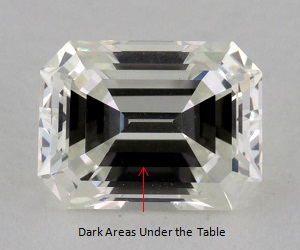

Such diamonds are best avoided for their extreme extinction (left) and windowing (right) effects.
As you can see, there is a high degree of uncertainty when choosing a diamond solely based on numbers shown in a grading report. You really need videos to help you see and visualize the diamonds.
Don’t “Cut” Corners (Pun Intended), They Do Matter For Shape Appeal!
If a fancy cut diamond deviates too much from its typical proportions, it can look awkward and may cause problems during the jewelry setting process. Ideally, the four corners should be sufficiently large for prongs to secure the stone without being overbearing.
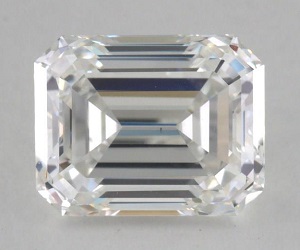
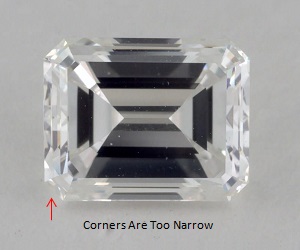
The diamond on the left is a good example of a well proportioned emerald cut while the one on the right isn’t.
Also, you want to double check that the facet edges are neat and parallel to each other from a face-up position. Usually, these variations in symmetry are pronounced and can cause the diamond to detract from their usual look.


Serious symmetry flaws like these should be avoided as they affect contrast patterning.
Best Ring Setting Designs for Emerald Cut Diamonds
In this segment, I want to share with you some of my favorite designs to give you an idea of what’s available in the market. Here, I want to point out that the choice of setting design is largely subjective and up to your individual tastes.
In my opinion, a simple four prong setting is one of the best (and no frills) design that showcases the unique step cut patterning of the emerald cut. If you are clueless about what to get, solitaire four prong rings are evergreen designs that you can’t go wrong with.
For fans of vintage style designs, I recommend a 3 stone setting with side baguettes that gives off a classy and timeless appearance. The tapered baguette sidestones also help to accentuate the center stone by drawing your eyes towards it.
Unconventional And Unique Emerald Cut Diamond Ring Settings
Due to their rectangularish geometric shapes, you don’t usually see pave or halo ring settings designed for emerald cut diamonds. For people who want to make a bold fashion statement and are more adventurous in their choice of designs, these are 2 unique designs that might appeal to you.
Budget Friendly And Affordable Emerald Cut Diamond Ring Designs
With clever use of thin shanks and cathedral designs, the size of the emerald cut diamond can be made to look larger than it is. Here are 2 designs that I like and they are very affordable for people on a tight budget.
Summary And Recap: Where to Buy Emerald Shape Diamonds
To recap, here are my recommended guidelines for buying an emerald shape diamond:
Depth: 60% to 65%
Table: 61% to 68%
Polish/Symmetry: Very Good or Excellent
Length to Width Ratio: Within a range of 1.30 to 1.50
Color: G or better
Clarity: VS2 or better
The table of ideal proportions should serve as a tool to help you quickly weed out lousy diamonds. The point to bear in mind is that you should always utilize videos to help you assess the cut quality and appearance of the diamond.
As I stated earlier, you need to go online to shop for emerald cut diamonds because physical retailers do not have the inventory for you to cherry pick from. Get this, the majority of the diamonds in the market are poorly cut and a physical retailer would probably only have 2-3 diamonds because of the high stocking costs.
I had to scour more than 500 diamonds just to pick out 4 great stones. What do you think your odds are at a physical jeweler who probably has little knowledge of cut quality and a mediocre selection of diamonds for you to choose from?
With emerald shape diamonds, the best places to buy your engagement ring would be Blue Nile and James Allen. All 3 are highly reputable and offer HD video listings. Also, they have excellent risk-free sales policies and have a large selection of GIA certified diamonds for you to choose from.
With that, I hope you enjoyed the article and found it useful. If you have any questions or need my help to pick out a diamond, simply contact me via email or leave a comment below.
Related Articles
Leave A Comment

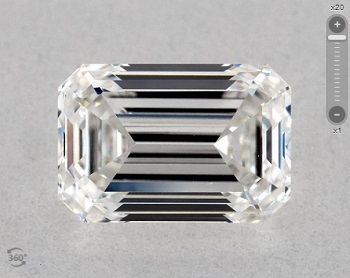
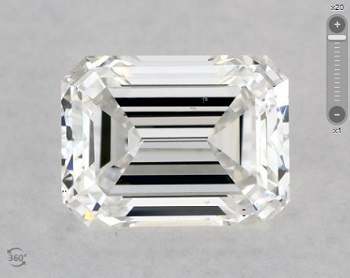
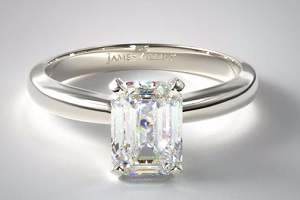
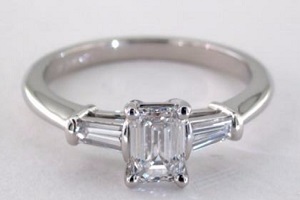
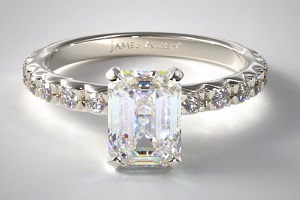
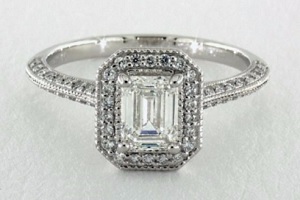
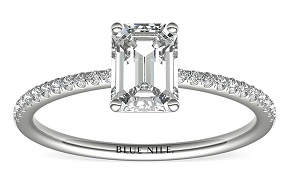


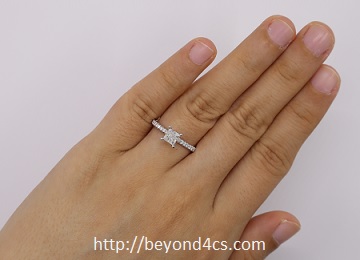
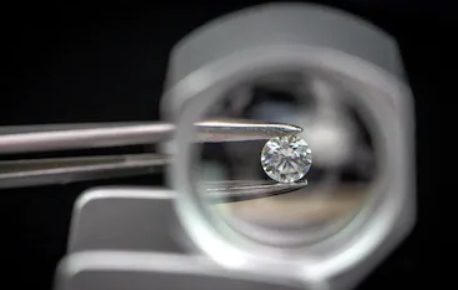
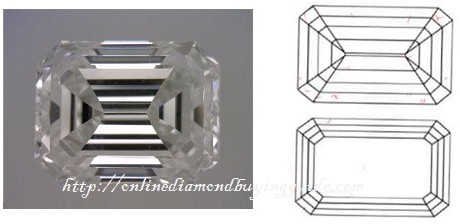









10 Comments
is Baguette cut tha same as Emerald cut? which one is more expensive inthe market?
No. They aren’t the same although both are elongated step cuts. Baguettes are strictly rectangular and are traditionally cut to 14 facets. Because of the simplistic look that Baguettes portray, they are usually used as sidestones in engagement rings instead of being the main diamond. On the other hand, emerald cuts tend to have better optical properties and a scintillation pattern that more consumers prefer.
In the market, emerald cuts usually cost more per carat. That said, it is very difficult to find properly graded loose baguettes (GIA) as most vendors don’t carry them. Baguette diamonds are rarely used as standalones or the center stones but rather, they are used as sidestones in a ring setting.
This url might offer more information: https://beyond4cs.com/shapes/baguette/
What a detailed website Thank you for sharing your knowledge!
Hi Paul, thanks for all your helpful info!
Do you have a series of photographs and ASET results for Emerald cut diamonds which you can share with comments?
Re: photos / videos, I’m not sure how much black I should be looking for in the preview photos to narrow my search before getting an ASET done. From what you’ve written here I guess (a) I want to use the contrast to look for symmetry and (b) I don’t want too much (extinction) or too little (windowing)… but not sure what is a good balance!
I found the ASET results you have on this page super helpful: https://beyond4cs.com/where-to-buy-fancy-cuts/ but couldn’t find any on the site specifically for emerald cut? May have missed them.
Bonus question: Is there a way to guarantee that the ASET result provided by James Allen relates to the specific stone I’m purchasing?
I’m looking at buying a ~2ct emerald cut diamond and based on your recommendation am strongly leaning toward James Allen despite being based in Australia.
Thanks for your help, as a details-oriented guy wanting to make a decision with confidence your site is awesome!
I stumbled upon your website while checking out reviews of Blue Nile. I really appreciate all of the information you provide!
I will definitely spend the time to digest it all before making any decisions. But I first I want to ask you for your opinion of which vendor I should go with, based on what I am looking for.
Specifically, I’m looking for an Emerald cut engagement ring, with a tempered baguette setting, in either 18 ct white gold, or platinum. Hoping to get 1 carat or just over. I’m willing to spend $5000-6000, but of course, if I can get a great quality ring for less, that would be good too.
Should I go with your number 1 vendor, James Allen? While you sounded “ok” in your review about Blue Nile, I noticed they didn’t even make your top 6 vendors for 2018.
I also saw where you said “cut is king” so I’ll be sure to focus on that, with whatever company you recommend.
Once I digest all of the information from your website, I’d like to come back to you with what I’m considering buying, if that’s ok!
Blue Nile is a jack of many trades and they don’t really specialize in a particular area. They are great for UK/EU consumers who have a misconception that they can avoid taxes with BlueNile instead of going with US based online vendors. What Blue Nile offers for EU/UK is a simplification of the tax paying process where they collect it at the onset of the purchase.
To each his own and if they are more comfortable buying from a company with operations in UK/EU and still legally PAYING tax, who am I to say they are wrong?
Anyway, that is really none of your concern given that you are based in the States. For emerald cuts, definitely start at James Allen. They have good selections of fancy cut stones. I did a search for you and would recommend these diamonds:
https://www.jamesallen.com/loose-diamonds/emerald-cut/1.27-carat-g-color-vs2-clarity-sku-4288046
https://www.jamesallen.com/loose-diamonds/emerald-cut/1.20-carat-e-color-vs1-clarity-sku-4355144
Both these diamonds are eyeclean and cut for light performance. I do have a preference for the better scintillation patterning of the G diamond. But if the small budget overrun is an issue to you, then go with the E diamond.
What is the point of cutting a step cut too deep, not only it retains ‘ dead weight ‘ affecting the spread, but also may cause light extinction and dark spots? For a 2 carat emerald cut diamond, would an H color be too yellow? My budget is limited and a G would be too expensive for me. Can you help me review a diamond if I give you the GIA certificate?
$$$$$$$
The price of a diamond is predominantly affected by its carat weight. Cutters have incentives to save weight at the expense of other factors in order to make more money. It’s as simple as that.
In emerald cut diamonds, the body color of the stone can show up very easily. It is even more readily apparent if you intend to buy larger sized diamonds above 1 carat. For this reason, I recommend that you to get a stone within the D – G color grades if you are color adverse.
Note: These are the various face-up views of different colors.
Due to the lesser brilliance and scintillation of the step cut, inclusions can also show up easily to the naked eye. To maintain eye-cleanliness, a higher clarity grade of VS2 or better is recommended. In my experience, I rarely come across eye clean SI1s or SI2s for emerald cuts and you do have to pay a little more for better quality diamonds.
Now, buying a great looking emerald cut diamond can be a very tricky affair especially for first time shoppers. Beyond the grading report, you need to make use of other available resources to help you make a rational decision.
I noticed that the clarity criteria for an Emerald cut is stricter than an Asscher cut. Why is that so? Also what do you think about preset rings? Should I buy a loose diamond and get it set separately? What are tips can you provide for selecting an emerald cut engagement ring setting.
The large table facet (top surface area) behaves like a clear, unobstructed window that allows you to peer within the diamond’s body. Asschers have smaller facets and are able to break up light more. Also, because the pavilion and crown facets are typically shallow, the light return of an emerald cut isn’t as strong as round cut diamonds. That’s why they need better clarity grades. Does this make sense?
Preset rings are a shortcut to buying jewelry but I don’t recommend it has most emerald cuts are poorly selected. You would do better to make your own selections. A strong argument for this approach is that the best stones are sold loosely in most cases and you get a high degree of autonomy to picking out the stone yourself.
There are arguments for and against every single setting that emerald cut diamonds can be used in. In the case of solitaire settings, they tend to go well with any types of shapes and make no complications aesthetically.
Three-stone settings are actually one of the most popular choices with square shaped diamonds like the princess, asscher and emerald cuts. The only thing you should probably keep in mind when dealing with multiple stones is that emerald cut do not mix well with other fancy cuts or the usual round diamonds.
With that said, these are my personal preferences and not necessarily yours. At the end of the day, it is still YOUR opinion that matters.